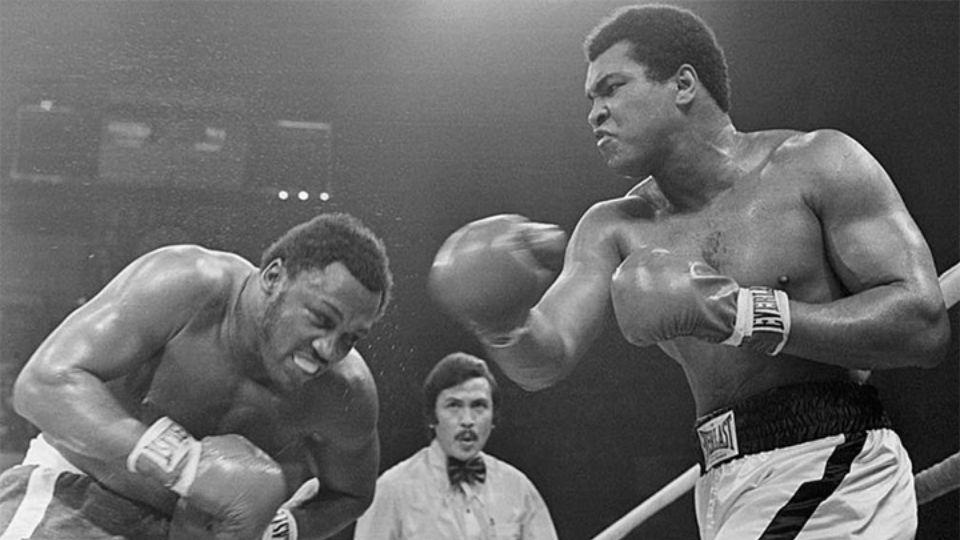Thrilla In Manila At 50: The Big Dome’s Eternal Legacy
Since the dawn of civilization, arenas have stood as monuments to the human spirit — places where triumph, struggle, and unyielding will are etched into history. These are not just architectural marvels of steel and stone, but hallowed grounds where collective memory is forged, where victories reverberate beyond the confines of their walls.
New York has Madison Square Garden, London cherishes Wembley, and Boston immortalizes Fenway. In the Philippines, the heartbeat of sport and spectacle has always pulsed strongest inside the legendary Araneta Coliseum.
Known reverently as “The Big Dome,” this Quezon City landmark has been the Philippines’ cathedral of competition and culture since 1960. J. Amado Araneta, captivated by the grandeur of Rome’s Colosseum, ordered its construction after acquiring land in Cubao in the early 1950s. Measuring 108 meters across, it became one of Asia’s largest indoor arenas and an enduring symbol of Filipino ambition.

From The Jackson 5 and Nat King Cole to Lady Gaga and Taylor Swift, from PBA championship classics to global basketball tournaments, the Araneta Coliseum has staged them all. Yet its crowning glory came on October 1, 1975, when the eyes of the world turned toward Quezon City for a bout so savage, so unforgettable, that it forever branded the arena into history: the “Thrilla in Manila.”
A Slugfest That Shook The Globe
When Muhammad Ali and Joe Frazier stepped through the ropes inside the Araneta Coliseum, they were not merely trading leather for the undisputed world heavyweight championship. They were vying for immortality.
In fact, for that singular event, sources recall that the arena was temporarily rechristened the “Philippine Coliseum” — a gesture underscoring its national significance as it prepared to host one of the most consequential prizefights in boxing lore.
Ali, the then-reigning and defending champion who had stunned George Foreman in Zaire, carried charisma, defiance, and brilliance. Across from him stood Frazier, the embodiment of grit, who once broke his arch-nemesis’ unbeaten streak and refused to bow to anyone’s shadow.
Their rivalry had already produced two unforgettable encounters — one victory apiece — but the rubber match at the Araneta Coliseum promised something different. It was personal, it was punishing, and it was destined to outlast them both.

The morning sun bore down on Quezon City with merciless heat, magnified inside “The Big Dome” until the ring felt like a furnace. Nearly 27,000 spectators, including the nation’s political elite, packed the arena to witness what became 14 rounds of sheer brutality.
Even Ali’s longtime physician, Dr. Ferdie Pacheco, remembered gasping for air: “I had a hard time breathing. Not only were all the seats filled, but all the aisles were also filled, and there were people crammed in the rafters. I don’t know if you could squeeze in one more person. It was body to body.”
Into this boiler room stepped Carlos Padilla Jr., a Filipino referee who became the “third man” in the ring. Only informed the day before that he would be officiating, he had never before worked a fight heavier than 135 pounds. Yet here he was, overseeing two of the greatest heavyweights of all time.
If the crowd was struggling with the heat, the fighters endured far worse inside the squared circle. Ali’s crisp combinations rattled Frazier early. Then “Smokin’” Joe, eyes blazing, stormed back with hooks that snapped his opponent’s head like a whip.
Blow after blow, sweat and blood mingled with the suffocating humidity, until exhaustion turned two giants into men running on nothing but pride.
By the 14th round, Frazier’s eyes had swollen shut. His trainer, Eddie Futch, unwilling to sacrifice his fighter’s life for glory, made the anguished decision to stop the contest. Ali, too exhausted to stand, slumped on his stool — confessing later that he had been seconds from quitting himself.
In the end, Ali was declared the victor, but both men had given so much of themselves that the clash transcended victory and defeat.
More Than A Battle, A Legacy
The “Thrilla In Manila” was more than boxing. It was a global spectacle that placed the Philippines at the center of the sporting universe.
At a time when the nation lived under Martial Law, the epic matchup became a paradox: a unifying celebration of Filipino pride and international recognition amid political turbulence.
For Ali and Frazier, the battle took years off their careers, but it also defined them as warriors of incomparable heart.
Ali would later admit, “It’s the closest I’ve ever been to dying.” Yet in his moments of candor, he spoke of Frazier with reverence, declaring that if ever God called him to a holy war, he would want “Smokin’” Joe fighting beside him.
Fifty years later, the echoes of that unforgettable morning still reverberate through the rafters of the Araneta Coliseum. A red banner commemorating the bout hangs high, a reminder to every athlete and performer who sets foot inside that they stand on sacred ground.
The fight’s legacy also lingered in Cubao’s skyline. In 1976, Araneta inaugurated Ali Mall, the country’s first major shopping center, named after the heavyweight champion himself. Ali personally returned to the country to cut the ribbon — a living testament to how deeply the “Thrilla” etched itself into Filipino soil.

‘The Thrilla’ That Never Fades
Time has ushered in newer stadiums and sleeker arenas across Metro Manila, yet the mystique of the Araneta Coliseum remains unchallenged. Every player who dribbles on its court, every singer who takes its stage, and every fighter who laces up a pair of gloves beneath its lights feels the weight of history pressing down from above.
Before the age of pay-per-view super-fights and globalized sports spectacles became commonplace, there was a morning in Quezon City when the world stopped to witness a confrontation so raw and unforgiving that it redefined the essence of combat.
On October 1, 1975, the Araneta Coliseum did not just host a boxing match — it became the crucible of courage, pain, and glory. Fifty years on, its story is still whispered in every corner of the world, invoked with reverence by athletes and audiences alike.
It was not simply a fight. It was “The Thrilla.”

